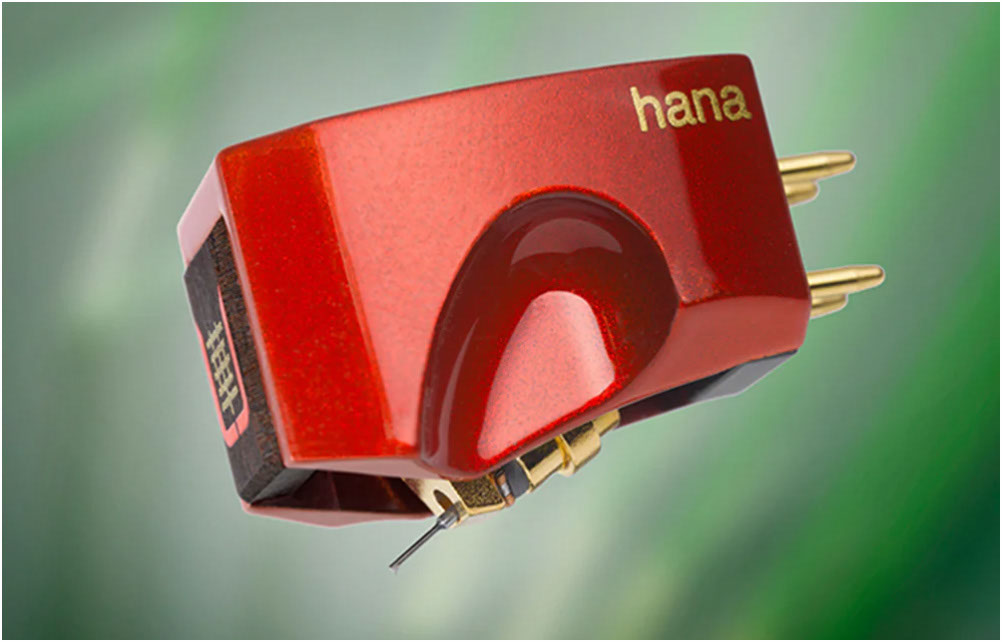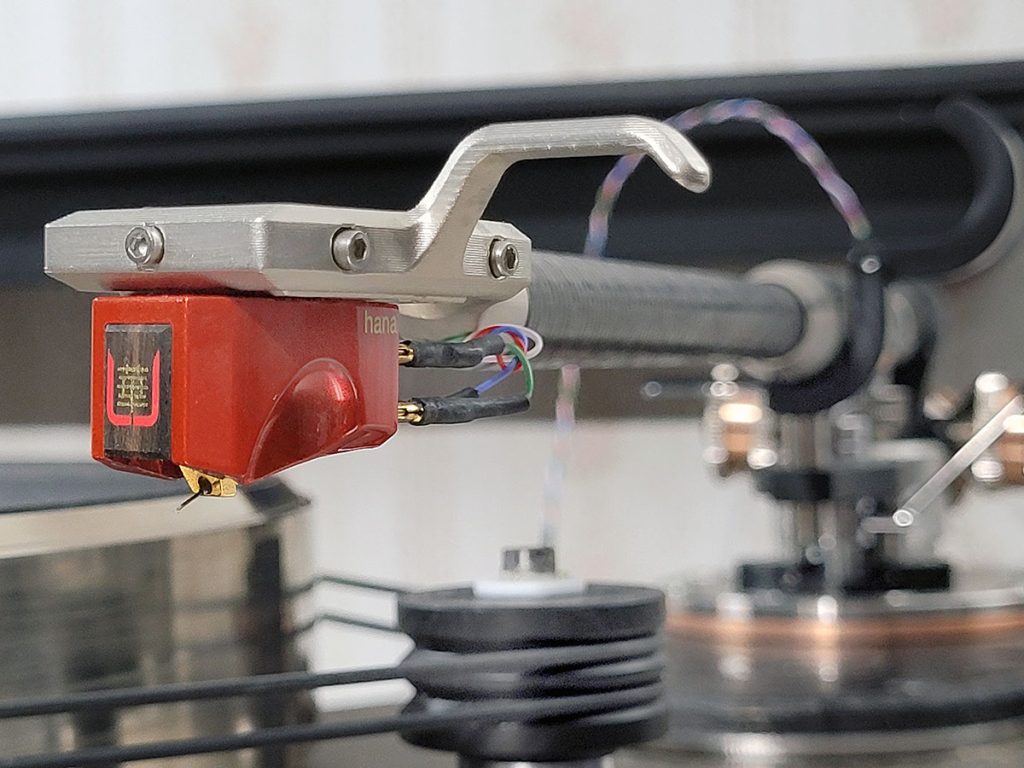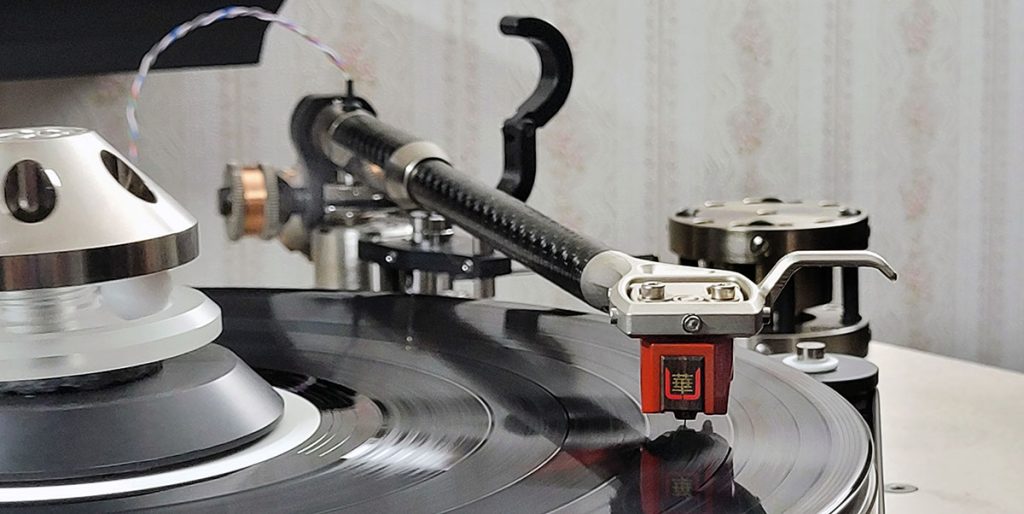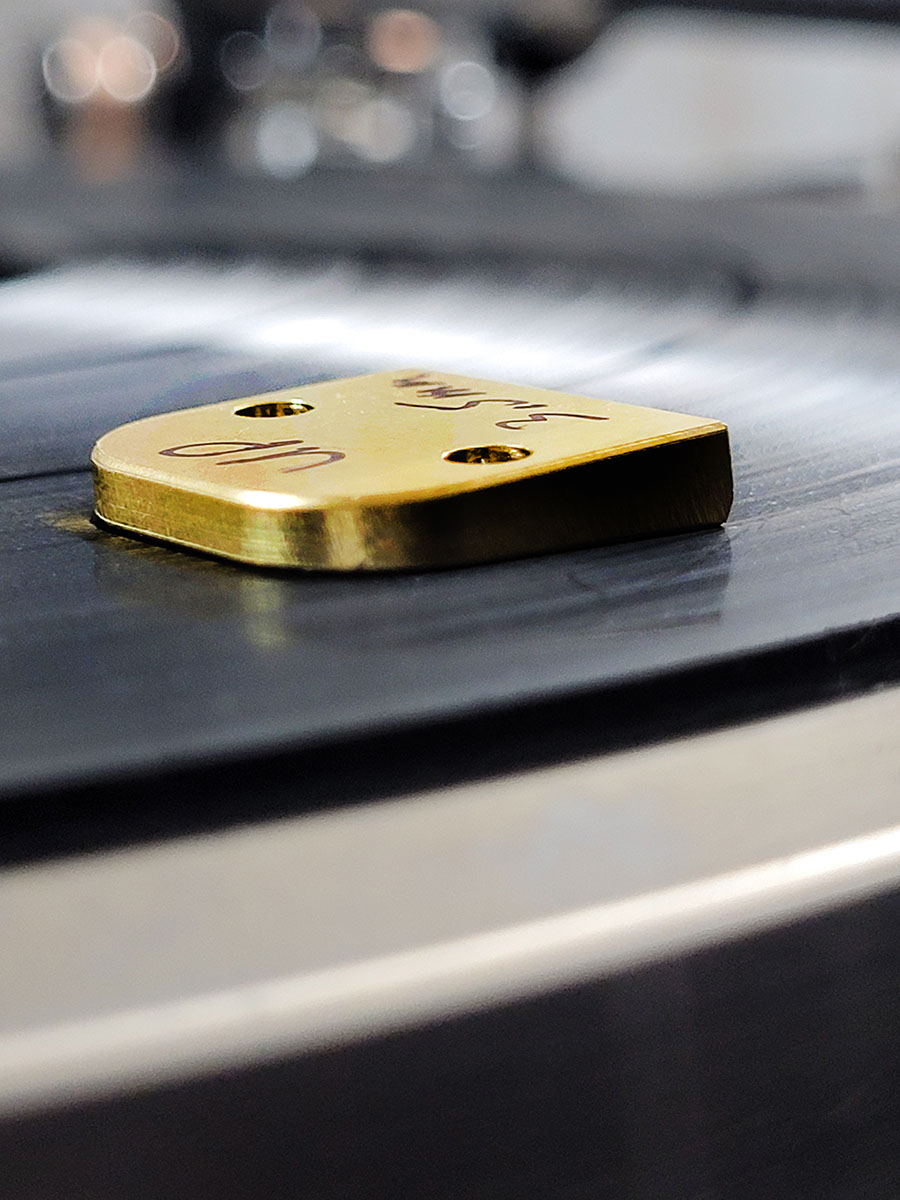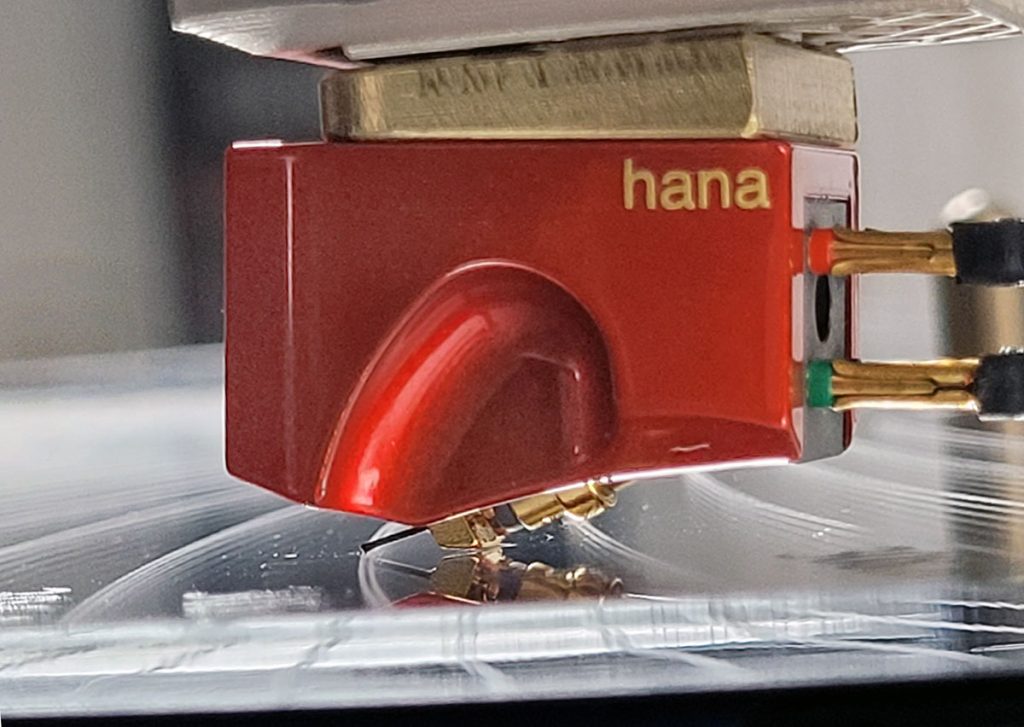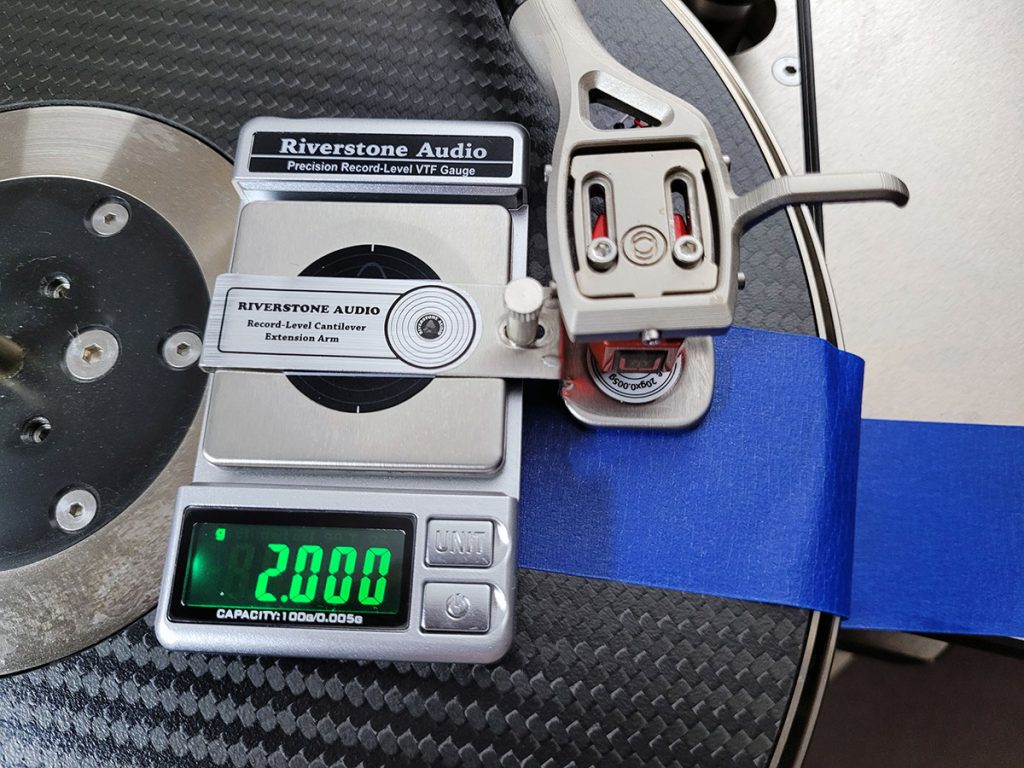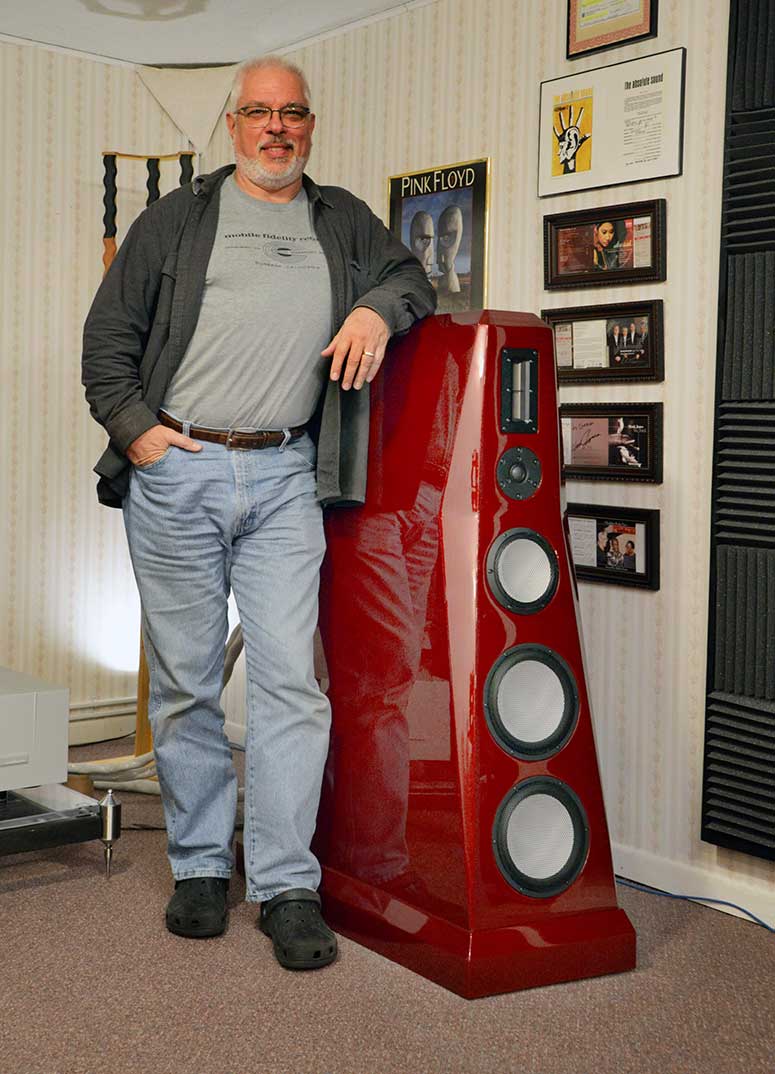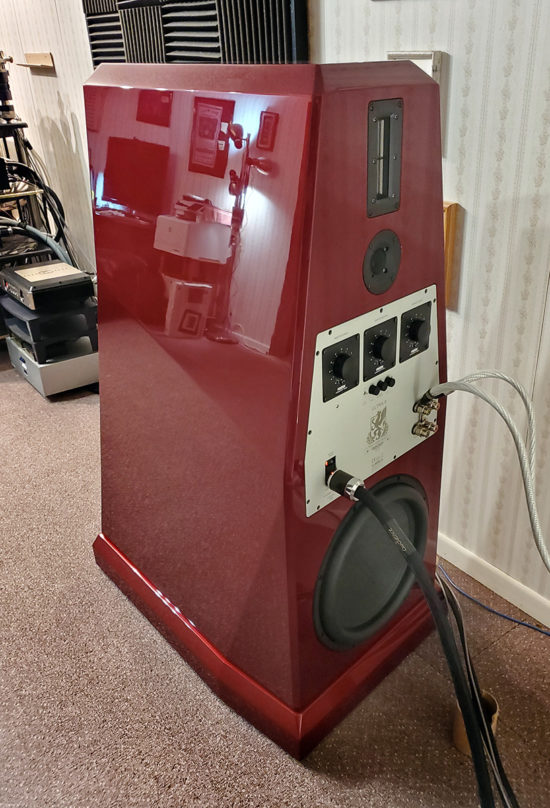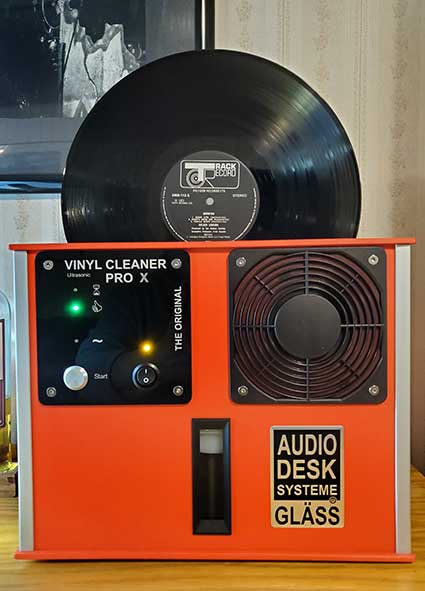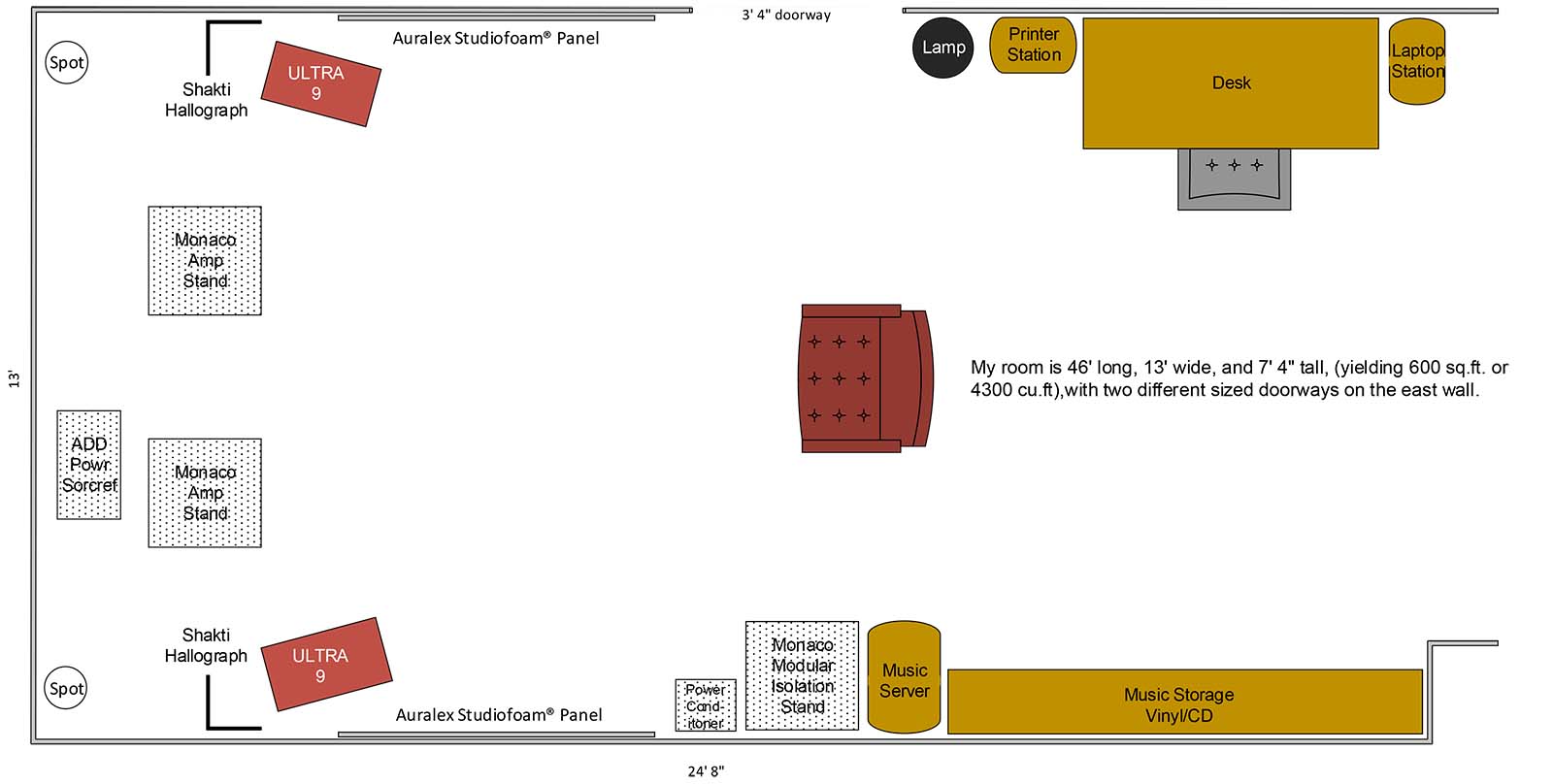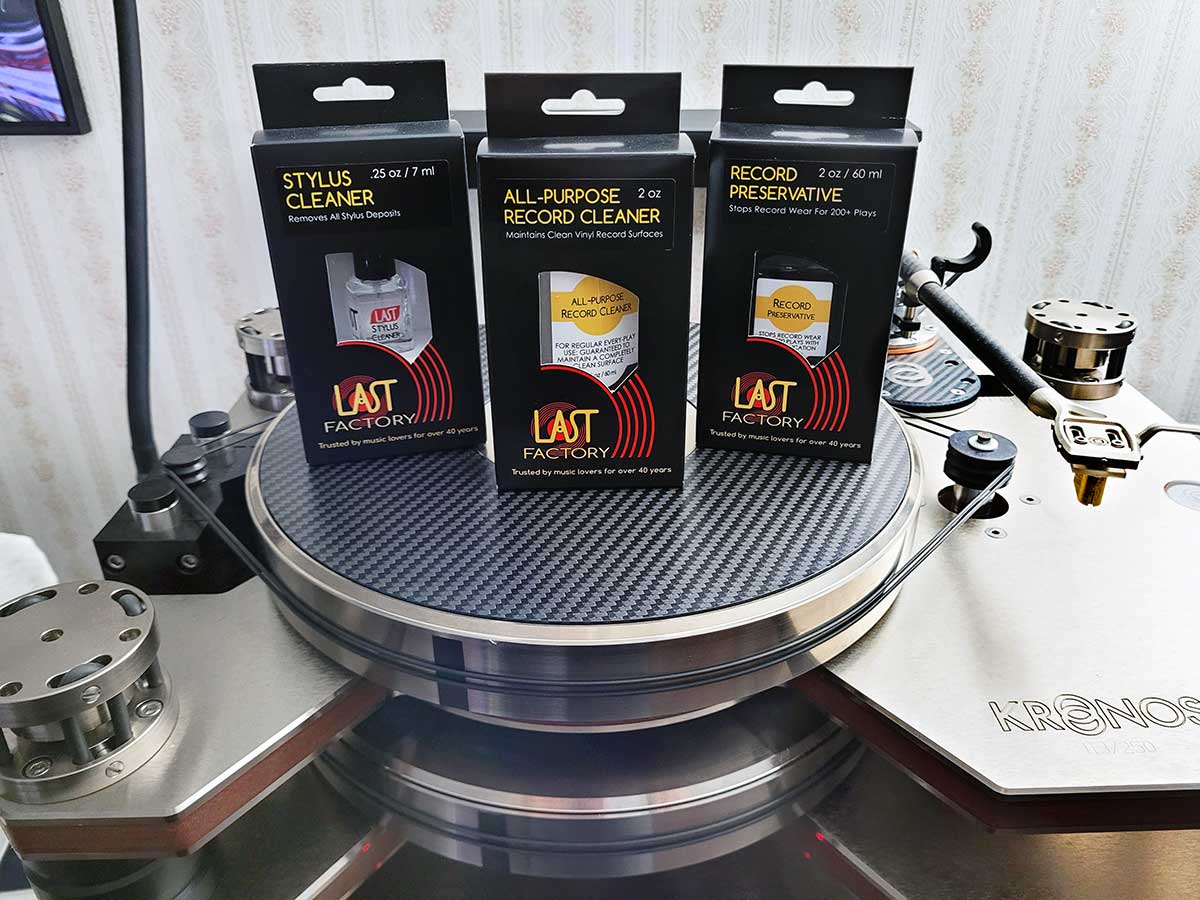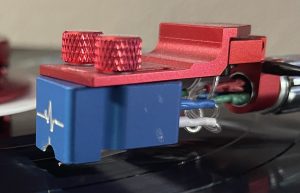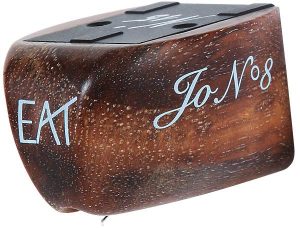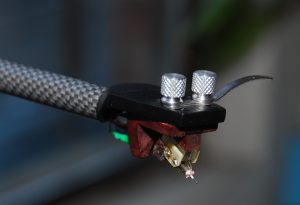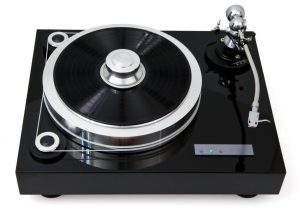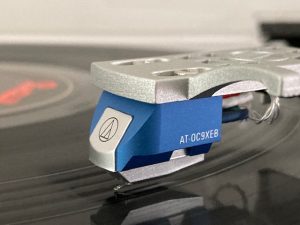Just How Close to World-Class Performance Can You Get for $3950?
Perspective
Before I acquaint you with what an emphatically notable performer the Hana Umami Red Moving Coil phono cartridge represents in today's blustering moving coil cartridge roster, permit me a brief foray into the background of the phono cartridge.
There are two primary types of phono cartridges out there today, those using either a moving magnet or a moving coil engine, with the moving coil variety the darling of the audiophile crowd. Other considerably less popular designs exist, including the moving iron and strain gauge variety, but neither of those is particularly germane to this discussion.
What defines the two primary differing motor approaches I've chosen to discuss here is the specific induction methodology with which they convert the movement triggered by the stylus tracing an LP's groove back into an electrical signal, and the key to each may be gleaned from their names. The moving magnet cartridge uses static coils of wire mounted inside the cartridge body, and has tiny magnets attached to the cantilever. As the cantilever moves, the magnet's resultant movement induces a varying signal in the fixed coil structure. The moving coil cartridge design utilizes that same electromagnetic principle—in reverse; it uses mounted static magnets in the cartridge body, with the wire coil attached to the cantilever. As the coil moves through the fields of the static magnets, that motion induces its varying signal.
One of the side effects of this difference in physical construction and execution between the MM and MC variety allows for the moving coil variety to, generally speaking, be of much lower moving mass than those of the moving magnet design. This more typically translates into both more refined tracking and superior transient response which may account for its clearly favored status among music-loving audiophiles like me.
The first acknowledged Moving Coil pickup cartridge, the type Mono-A cartridge, was developed and introduced by Holger Christian Arentzen in 1948, working for the newly founded Ortofon A/S. My first exposure to the MC design came when I heard the Supex SD-900 in 1974, which, at the time of its introduction, was widely considered to offer the finest overall phono cartridge performance available. The father of a friend not only owned the remarkable Transcriptors Hydraulic Reference turntable, but it was fitted with their Vestigial tonearm, the aforementioned Supex SD-900, and used that era's Quad electronics to drive Quad ELS 63 loudspeakers. And as appealing as that cart may have been, I simply couldn't afford one in my post-high-school/Film School days. The SD-900 sold for $125 at a time when the Shure V15 Type III was $70, costing more than just one of my EPI 100 loudspeakers!
I was finally able to make the move away from moving magnet cartridges to the moving coil camp in the late 1980s with the purchase of the Monster Cable Alpha Genesis 500, followed shortly by the Sigma Genesis 2000, a product line that was an early collaboration between designer Hisayoshi Nakatsuk, now the president and designer at ZYX, and the Adamant Namiki Precision Jewel Co., Ltd. of Japan—who as of January first of 2023, is now known as Orbray Co., Ltd. By the way, Orbray is one of only three fabricators of phono cartridge cantilever assemblies in the world today, including Switzerland's Gyger AG and Japan's Ogura Industrial Jewels.
Since the late 1980s, I have spent considerable time with a good diversity and number of MC cartridges, from very reputable brands like Accuphase, Air Tight, Audio-Technica, Benz-Micro, Clearaudio, Denon, Dynavector, Goldring, Grace, Monster Cable, My Sonic Lab, Ortofon, Shure, Sumiko, Transfiguration, van den Hul, and ZYX, and have had brief flirtations with some from Decca, Lyra, Kiseki, and Koetsu. But I have to admit to having been utterly seduced and enchanted once I heard Atsushi Miura's efforts that, circa 2006, resulted in the original Air Tight PC-1.
In fact, Miura-san's work so impressed me that, once I experienced the PC-1's abilities, it became my reference cartridge—right up until I heard the utterly enchanting Etsuro Gold in January 2019. You may enjoy the deeper history of the Air Tight story, as well as my insights into what compelled me to choose the Etsuro Gold as my new reference in my review of that cartridge HERE.
With all this in mind, I want to point out what I find to be both a fascinating and significant trait of the Hana cartridge lineup… they are all manufactured by Excel Sound in Yokohama, Japan, and employ Orbray cantilever assemblies. What makes that so significant? Excell also manufactures the entire Etsuro Urushi cartridge lineup, and they too employ Orbray cantilever assemblies. Hmm. Do you see where this might be going?
What's In A Name
Established in 1970, and for more than fifty years now, Excel Sound and Masao Okada, who started researching phono cartridge design as early as 1964, have manufactured exceptional phono cartridges. At that time, they started producing their own branded cartridges under the appallingly unmemorable and uninspired name ES-70 (Excel Sound 1970), initially offering six different models.
But from 1975 through the 1980s, Excel Sound focused on manufacturing a surprisingly overwhelming number of highly regarded and much more famous OEM products for a multitude of Japanese audio manufacturers, including giants like Pioneer, Sansui, and Sanyo, as well as for several other overseas audio manufacturers. At their peak, they were producing and shipping some 50,000 MM cartridges per month!
With the ever-growing popularity of the Compact Disk starting in 1982, the steadily decreasing demand for all things LP forced a related reduction in the production of cartridges. Yet at this point, Excel still manufactured an extensive lineup of current OEM products for many established manufacturers who wish to remain anonymous. Such anonymity allows them to enjoy the credit for the accomplishments of products bearing their brand name manufactured by Excel.
But times change. According to the RIAA, in 2022, vinyl sales surpassed CD sales for the first time since 1987, even though they found that half of all LP buyers don't even own a turntable! But it was this remarkable resurgence of vinyl over the past decade that has led Excel Sound, in partnership with Hiroshi Ishihara, now president of Hana-Youtek Ltd., to partner to reintroduce an in-house brand of remarkable phono cartridges beginning in 2016. And so the Hana lineup came into existence.
With Excel's vast experience designing and manufacturing all the major components for so many other company's successful phono cartridges, their extensive investment in the specialized tooling and processes that such specific manufacturing requires, and with an experienced team of craftsmen already adept at skillfully hand assembling very high-quality finished products for others, they have been able to leverage these many existing resources, allowing them to build a remarkably accomplished product lineup, and one that enjoys one of the most effective price to quality ratios available today.
Construct
The Umami Red's body is fashioned of Duralumin (A7075) and Ebony wood and is finished with a beautiful Urushi lacquer in red satin. It employs a Boron cantilever, with a microline nude diamond stylus geometry. The microline, sometimes called the micro-ridge, stylus contour was patented by Namiki in 1983, and its very complex shape is possible only with the use of laser-cutting techniques. Its multilevel "ridge" shape typically has a profile of somewhere between 2.5 to 3.8 µm x 75 µm. One micrometer (µm) is equal to one-millionth of a meter. This extremely refined profile allows the best high-frequency performance available and affords extended record and stylus life—when aligned correctly—though it is both quite difficult and expensive to manufacture.
The Red's terminal mounting plate is fabricated of Polyether Ether Ketone, a high-performance organic thermoplastic polymer. Its terminal pins are 24-karat gold plated to prevent corrosion, and the whole assembly weighs just 10.5 grams. Its square armature plate is made of pure iron-based permalloy with a samarium-cobalt magnet, its coils are of high-purity copper, and the entire mechanical assembly (the cartridge, front and rear yokes, pole piece, and 24K gold-plated terminal pins) is cryogenically treated!
I don't think I will be alone in finding it relevant to note that the $21,000 Etsuro Gold also uses a Duralumin body and an Urushi finish. Urushi takes part of its name from the whitish rubber-like tree sap used in the traditional Japanese lacquering process, used as a coating to harden, stiffen, or preserve items. This treatment process dates back centuries, as even the Samuri treated their battle armor with Urusi lacquer. And while the Etsuro Gold uses a pure diamond cantilever, Boron, used in the Umami Red, is the next best, and considerably more affordable, material to be used for such a purpose.
With a coil impedance of 6Ω/1kHz, its terminating impedance is given as 60Ω. With a stated frequency response of 10-50,000Hz, it offers an output level of 0.4mv, a channel separation of greater than 30dB, and a channel output balance of just 0.5dB, all measured at 1kHz. Its tracking ability is 70µm at its recommended tracking weight of 2 grams.
If, like me, you are curious about word origins, or etymology, scoping dictionary definitions would reveal that Umami is of Japanese origin and is considered to be the "fifth" basic taste—along with sweet, sour, salty, and bitter. While it could be interpreted as "meaty," or "complex," my investigation reveals that its most accurate translation connotes "deliciousness," or "savoriness." As will soon be revealed, either of those last two translations are clearly appropriate descriptors.
Preparation
Replacing my Etsuro Gold with the Red on my reference Kronos analog front end, which includes their Pro Limited Edition turntable, powered by the Super Capacitor Power Supply-1, and using their sui generis Discovery Resonance Suppression tonearm, was a snap.
While I don't have the space to detail the process here, with full approval from Musical Surroundings President, Garth Leerer, Hana's US importer, this beautiful little cartridge went off to WAM Engineering to take advantage of their $495 Stylus/Cantilever Microscopic Analysis & Correction service.
This unprecedented, incomparable service includes a detailed optical inspection and analysis of your cartridge's native geometry, identifying potentially troubling issues with SRA, VTA, Azimuth, and even Zenith orientation, and the ensuing measured impact on WAM's identified seven alignment targets. The service includes a custom-made shim, specific to your cartridge, that, when used between your tonearm headshell and cartridge, mechanically compensates for geometric inaccuracies uncovered in your stylus/cantilever assembly, allowing for a considerably more ideal azimuth and SRA, under dynamic conditions.
Sensation
The bass performance of the Red was flat-out amazing! It is exceptionally well-extended and pitch-defined, capable of exposing remarkably detailed texture and delivering a degree of resolution that was both very compelling and utterly unexpected at this price. The speed and composure with which it regenerates the lowest registers on tracks as diverse as the "Poco Adagio" from Saint-Saëns Symphony No. 3 In C Minor, Op. 78 (Mercury SR-90012), Jim Keltner's improvisations from The Sheffield Drum Record (Sheffield Lab – Lab 14), or "2049," the opening theme from the superb Hans Zimmer/Benjamin Wallfisch Original Motion Picture Soundtrack Blade Runner 2049 (Epic, Alcon Sleeping Giant 88985494341), not only showcase its remarkable lucidity down into the sub-bass regions, but effectively demonstrates its ability to comfortably approximate the music's power, including presenting its depth, speed, and tautness with superbly-defined pitch. Only with direct comparison to something like my reference Etsuro Gold will the Red reveal the slightest of lapses in absolute resolution, extension, speed, and control.
The Red's midrange performance is practically blustering with life, offering fertile detail and saturated with authentic textures, harmonic bloom, and a purity of tone that is disarming. This wealth of vibrantly colored, vividly detailed, and richly textured tonality coalesces to imbue instruments with an almost unnerving amalgam of correct timbre and physical essence, affording a veracity of corporality that approaches that of the absolute best I've heard.
The Red's remarkable resolution extends well into the upper registers as well, which are extremely well extended and capable of revealing delicate detail, conferring an articulate and lively sense of shimmer and air. In my time with the Red, it was never harsh or showed any etch, edge, or glare, unless those properties were part of the recording under consideration.
Its combination of fine resolution with vivid, faithful texture allows it to regenerate decidedly accurate image sizes and locations, as well as subtle soundstaging cues. It has an exceptional ability to discerningly render discrete voices, to disentangle individual distinct expression from the whole, and to shine a more relevant spotlight upon each of them, rendering them with remarkable specificity, and at the same time, allowing them to recreate a more authentic sense of believability and corporality to the entire musical tapestry.
Globally speaking, this is a simply superb cartridge, one that consistently performs well above other entrants in its price class. While it may lean a tad to the warmer, smoother side of absolute neutrality, its broadband resolution, nuanced microdynamic expressiveness, macrodynamic control and scaling, inspiring neutrality of timbre, and overall octave-to-octave balance make it an exceptional value. In many ways, it is more reminiscent of the exemplary performance I enjoy from my five times more costly reference cartridge than it is different from it. I rarely choose to make such comparisons, but this cartridge is so impressive, and in so many respects, that I'm willing to suggest that it offers eighty, maybe even eighty-five percent, of the magical performance I routinely experience from the world-class, $21,000 Etsuro Gold. But hey, that really shouldn't be so surprising when you consider the strong familial relationship. After all, they are designed and constructed by the same artisans, using many of the same principles, techniques, and components.
In short, at its asking price of $3950, and with its two-year warranty, the unassuming, beautifully crafted, and over-achieving Hana Umami Red is a brilliant, shimmering star in today's moving coil cartridge universe. Most enthusiastically recommended.
Specifications
- Body Material: Duralumin (A7075), Ebony wood
- Body Finish: Gloss Urushi Lacquer/Red
- Magnetic Circuitry: Pure Iron/Cryo Treatment
- Coil Wire: High Purity Copper
- Magnet Material: Samarium Cobalt
- Stylus Contour: Microline
- Cantilever: Boron
- Channel Separation: 30dB/1kHz
- Frequency Response: 10-50,000Hz
- Cartridge Weight: 10.5g
- Recommended Vertical Tracking Force: 2g
- Output Level: 0.4 mv
- Output Balance: <0.5/1kHz
- Trackability:70 µm/2g
- Coil Impedance: 6Ω/1kHz
- Suggested Load Impedance: > 60Ω
- Warranty: 2 years
Umami Red Cartridge
Retail: $3950
Hana
US Distributor
Musical Surroundings
5662 Shattuck Ave., Oakland, CA 4609-1662
510.547.5006




